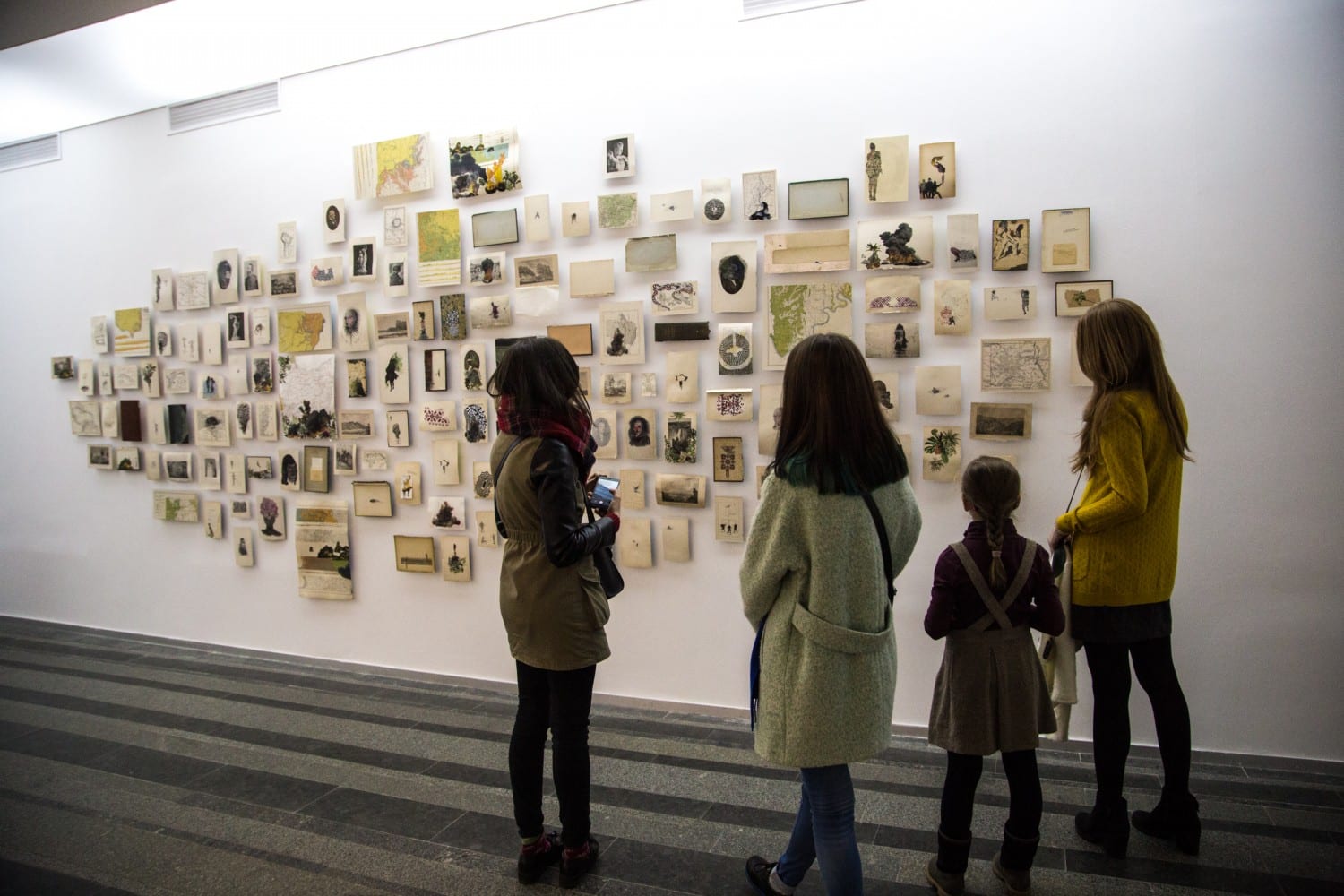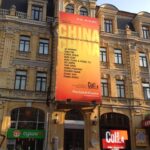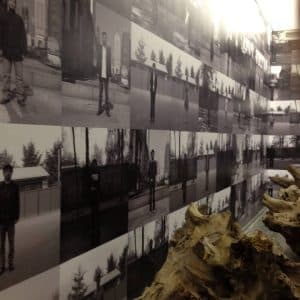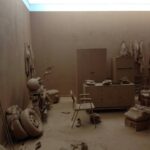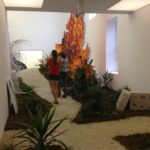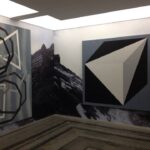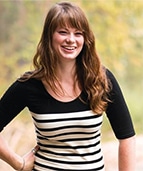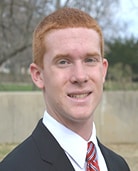The PinchukArtCentre in Kyiv has been one of SRAS students’ favorite spots. This massive art gallery often focuses on issues of national identity in the context of international challenges. It also focuses on young artists, helping to foster a new generation of Ukrainian expression. Thus, the interests of the PinchukArtCentre coincide well with study abrod students on SRAS’ flagship program in Kyiv, Identity and Conflict in the Post Soviet Space.
Founded by steel magnate Viktor Pinchuk in 2006, the gallery’s exhibitions, masterclasses, lecutres, and other events are always free. It also brings in international shows occassionally.
Below are two reviews of the PinchukArtCentre given by two SRAS graduates who recommend the experience! You can see what is currently happening there on the gallery’s website.
PinchukArtCentre: Culture and Instagram
1. By Rebekah Welch (2017)
The PinchukArtCentre in Kyiv contains two of my favorite things: modern art, and people who wear fake horn-rimmed glasses and go take selfies with modern art. Come for the art and culture, but stay for the people watching. It’s free, and absolutely worth it.
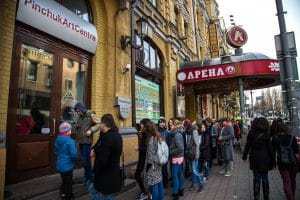
My first tip that PinchukArtCentre is a hip and happening place was outside. Though from the outside the building itself is ubiquitous, as we waited our turn behind 6 or 8 people, I noticed the line behind us growing exponentially. It must’ve stretched half a block. When you finally reach the narrow glass doors that open to a sterile white room, a desk, and an unusually massive Ukrainian security man, he instructs you to step through a weapons detector like at an airport, then looks through your purse. “Wow,” I said to Nastia, my Ukrainian peer coach who brought me. “This art museum in no joke.”
She informed me that it is apparently a joke, at least as far as the security staff is concerned. They’re rather famous for pulling a particular gag, accusing foreigners or otherwise unsuspecting museum goers of being terrorists when they step through the detector. They panic for a second or two, and then everyone laughs and they send the poor patron on their merry way. I am as disappointed I didn’t witness it as I am glad I wasn’t the butt of this classic joke, but if you happen to find yourself there and this happens, don’t panic. Unless you’re a terrorist.
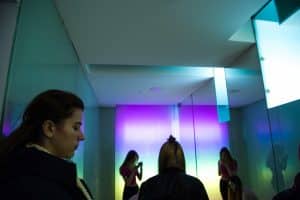
PinchukArtCentre is five stories, linked together by narrow spiral staircases and a confusing maze of different gallery spaces blocked off occasionally by black velvet curtains. The interior design is purely modern. Plentiful sleek metal surfaces, white walls, hardwood floors, mirrors, and rainbow bathrooms. Perhaps my favorite display of all time is in one of the first rooms you come to. It’s a highly believable fake currency exchanging station. I would have had no idea it was a fake, only a display if not for Nastia, who asked someone so that she could be sure. I don’t know why this tickled me so much. It looks so real, and the amount of the currency exchange stations in Kyiv is absurd. Almost literally one every corner. I am sure that there a moving underlying meaning here, about the world economy and globalization, perhaps, but I don’t want to put the words in the artist’s mouth. I found it clever enough on the surface.
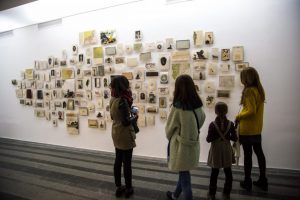
PinchukArtCentre is also international. I saw work from numerous countries: Ukraine, the UK, the US, the Dominican Republic, South Africa, plenty more. Pinchuk also sports a healthy mixture of featured mediums, sculpture, paint, of course, and a giant amount of multimedia. One room featured a seemingly endless video of men and women crawling around on the floor with microphones, hitting the microphones on parts of their bodies to create a thumping sound. Art. I’m sure half the people in the room loved it. There are also, of course, many displays that are a touch less conceptual, and very worth seeing. A second favorite of mine was a sort of documentary in one of the rooms. It used two screens and was visually genius, about the laws of physics in the cartoon universe, and related these laws to the human psyche. There were paintings that took up entire rooms, massive sculptures, and tiny found-object pieces. Each display also gave the artist’s statement in both Ukrainian and English. Huge bonus.
In short, the PinchukArtCentre is like any other modern art museum. Some displays are insightful and creative, and some are so eye-rollingly over-the-top that you question the very notion of art. As I see it, there is a huge entertainment value in both. If you don’t mind maneuvering between selfie sticks and a hip Ukrainian art snobs, go. It’s free, and you’ll come away a little bit more culturally enlightened, one way or the other. My only complaint is they don’t allow photos with professional cameras. But of course I snuck one in the rainbow bathroom anyways.
PinchukArtCentre Exhibition of China China
2. By Alexander Wilson (2013)
The PinchukArtCentre, located near the center of downtown Kyiv, resulted from a combination of art and oligarchy. Founded by Ukrainian businessman Viktor Pinchuk— who has an estimated net worth of $3.8 billion according to Forbes and is currently the second-richest man in Ukraine —the PinchukArtCentre is a testament to Pinchuk’s money as well as cultural taste. Like most oligarchs, Pinchuk owes part of his fortune to close political ties, namely with the family of former president Leonid Kuchma, yet he has also long been one of the more generous members of the Ukrainian business elite and a patron of the arts. The PinchukArtCentre, with its modern exhibits, convenient location, and, most importantly, free admission, is one of the ways that Pinchuk has “given back” some of his wealth to his country and to Kyiv’s visitors.
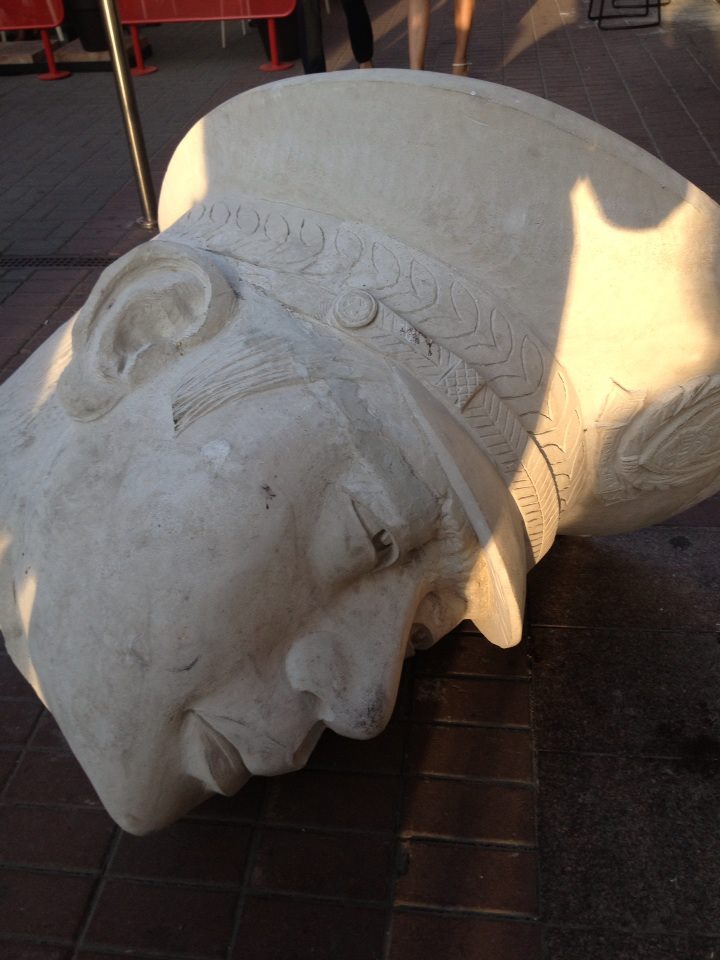
The centre’s official website—accessible in English and Russian—explains that the PinchukArtCentre is “an international centre for contemporary art of the 21st century. It is an open platform for the artists, the art work and society. Its definite innovative profile is aimed at the dynamic interlacing of new production, presentation, and collection bridging national identity and international challenge.” This contemporary artistic vision is evident even before entering the center, as visitors are greeted by a work of art on the sidewalk just outside the doors—a huge, fallen statue of an anonymous dictator, with the head cracked off and lying to one side.
After entering, each visitor is greeted by security and forced to relinquish his/her фотоаппарат (camera), since photography is apparently forbidden. Thankfully, though, they don’t seem to take people’s smartphones, so with my iPhone still in my possession I was able to surreptitiously snap some photos while the security guards weren’t looking.
Though it does not appear to be a large building from the street, the PinchukArtCentre boasts three floors worth of exhibits to explore, and each floor has its own unique collections and artistic flavor. As with most art centers, the works on display change every so often, but the general atmosphere of the PinchukArtCentre is one of heady modernism and post-modernism.
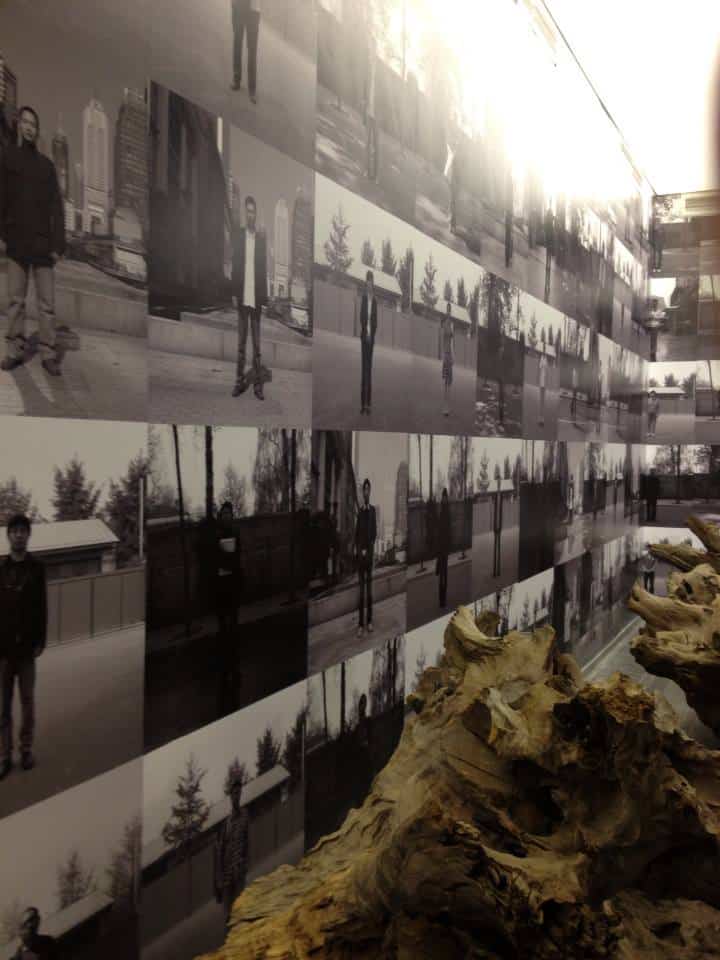
Currently, there is also a healthy dose of the Oriental, as the feature exhibit until 6 October is “China China,” which the centre’s website describes as “a major group exhibition including eleven Chinese artists of different generations, focusing on the tension between individuality and collective thinking.” The exhibits of and about contemporary China were intriguing and well-arranged, even in the opinion of an inexperienced modern art critic such as myself, and the entire museum in general seemed to be tastefully laid out. Some of the non-Chinese exhibits, however, might not be considered tasteful by everyone, although there were minimum age notices for the more graphic and explicit areas.
Overall, the PinchukArtCentre is an intriguing cultural destination in Kyiv to explore and enjoy. While definitely not a “must-see” spot in a city with so much history and so many other attractions, its convenient location, array of exhibits, and free admission make it an attractive stop for the more artistically minded.


